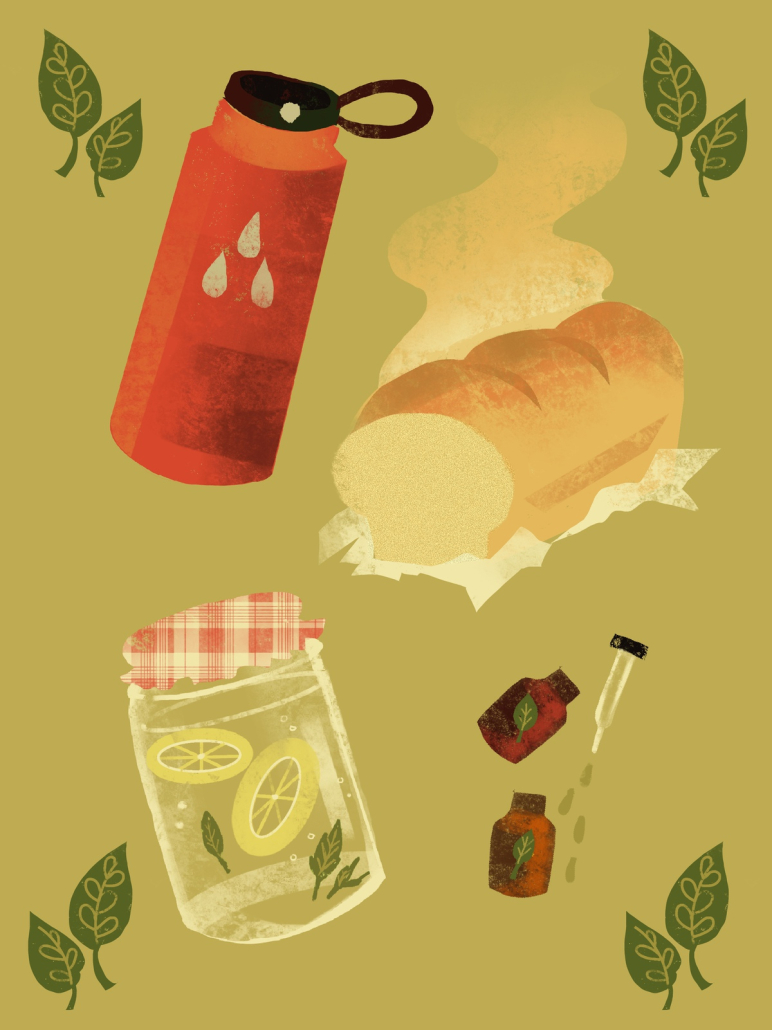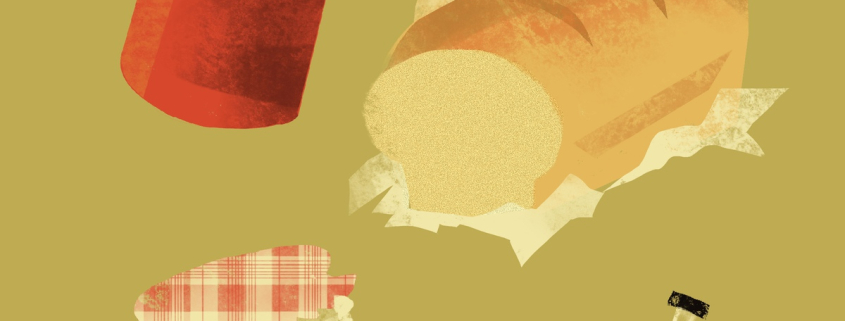Literary Kitchen Witch: Everyday home goods are trying to poison you

A couple of months ago, I found myself on the homestead and sustainable living side of TikTok and I haven’t left since. With tips on farming, gardening and even how to make a sourdough bread starter, this is the best side of TikTok to be on.
Through my daily scrolling, I find that accounts often mention how many chemical additives are present in everyday items such as laundry detergent, all-purpose cleaners, store-bought bread and plastic Tupperware. Everything in my house suddenly seems very dangerous and scary.
These TikToks motivated me to lead a non-toxic lifestyle through a series of small changes. First I swapped out Tide for Seventh Generation Ultra Power Plus and then changed my plastic Tupperware for only glass dishes. While I did not feel content with only small changes, I knew eventually I would implement more changes to lead a more true non-toxic lifestyle.
During this transition, I received an alarming call from a genetic counselor. I was told my blood results indicated a genetic predisposition to cancer. After meeting with her, I found out I had a 68% chance of getting breast cancer — the national average is 13% — and it is only expected to increase as I get older. Despite rational statistics, all I could think of was that I was going to get cancer and die. My tantrum lasted 10 minutes when I quickly realized I was overreacting; just because I have a high chance of getting cancer, I don’t actually have it. So, I decided to do everything in my power to prevent it.
Sounds easy, right? Except living in America is like one giant “WARNING” label. Almost everything includes some carcinogens — cancer-causing chemicals — whether it’s the pesticides that are doused on produce, the nitrites in red and processed meats or the dyes coloring everything from candy, cereal, condiments and dairy products. I quickly got overwhelmed and decided to write down everything I learned. I realized the only way I would successfully make my home non-toxic was to group it into distinct sections: kitchen, health, cleaning and beauty.
Looking at the kitchen, I became aware of the Environmental Working Group’s “Dirty Dozen” and “Clean Fifteen” lists. Essentially, every year the EWG publishes two lists of produce, one that outlines the crops the Department of Agriculture found to be most contaminated with pesticides and the latter being produced with the least pesticide contamination. Growing up, a quick rinse of fruits and veggies was the norm, but now I clean them with baking soda and vinegar. Vinegar helps reduce bacteria and remove surface dirt and residue while baking soda helps to remove dirt, chemical residue and other unwanted materials.
When it came to cleaning products, I was very hesitant to switch. While I had changed from Tide, Clorox, Windex and other mainstream cleaning brands, my capitalistic mindset needed entirely different cleaners for everything. My brain could not fathom the idea of cleaning my floors with the same solution I used to clean my countertops. It was not until I came across @kasha.cabato on TikTok, who might as well have called me out by name when she said, “I think one of the biggest marketing scams is the idea that you need to buy a separate cleaner for everything in your home.”
She introduced me to Dr. Bronner’s Sal Suds, a non-toxic concentrated cleaning solution. This multi-purpose soap is absolute perfection. On paper, the company advertises it as “the ultimate multi-purpose household cleaner!” The website also claims that “[Sal Suds] is made with plant-based surfactants, natural fir needle and spruce essential oils (no cheap, harsh pine stump oil), without any synthetic dyes, fragrances or preservatives.” I bought the 1-gallon size and can attest it is impressive. With the help of Dr. Bronner’s website, I also found a recipe to substitute just about every cleaning product I typically used.
Some helpful books I have utilized include “Clean Mama’s Guide to a Healthy Home” and “Journey to a Non-Toxic Home.” That said, Google has been my best friend in finding quick solutions and tips for transforming my home into a non-toxic household.
Overall, I am not living an utterly non-toxic lifestyle. I still indulge in Flamin’ Hot Cheetos and chamoy (although I have heard “I Love Chamoy” is sugar-free and has no aspartame, so I will be trying it soon). Still, everyone should be aware just how many chemicals are in our foods and cleaning products. Awareness of our environment will lead to better health by improving immunity, energy levels, reducing inflammation, stress and your risk of developing cancer.
Cynthia Solis is a junior writing about literature, cooking, and all things plants. Her column “Literary Kitchen Witch” runs every other Wednesday.

